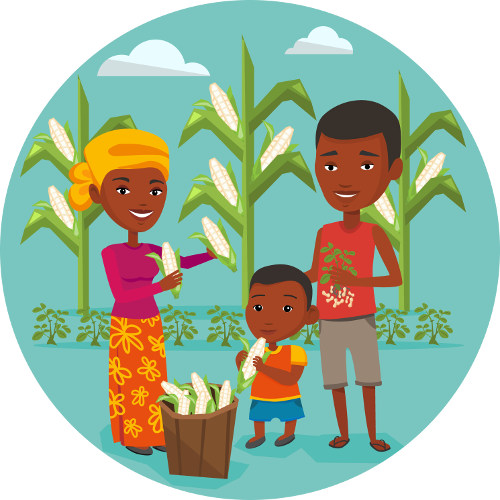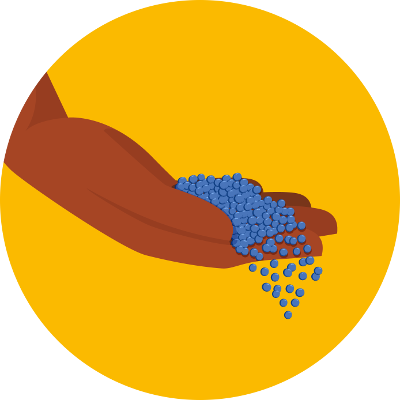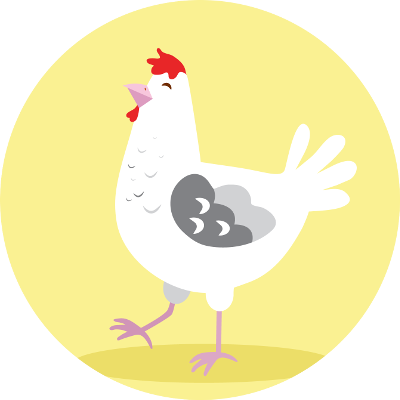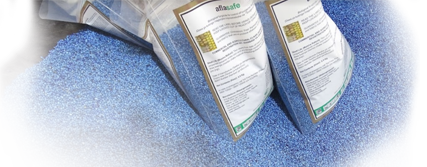Aflasafe: a low-cost investment New and lucrative markets Opportunity costs and avoiding losses to aflatoxin
 For farmers and farm businesses, Aflasafe is a highly cost-effective solution to the problem of aflatoxin. It provides reliable protection from the increasing costs of contamination, and ensures access to growing markets offering premium prices.
For farmers and farm businesses, Aflasafe is a highly cost-effective solution to the problem of aflatoxin. It provides reliable protection from the increasing costs of contamination, and ensures access to growing markets offering premium prices.
Aflasafe is very effective in cutting aflatoxin, almost always by at least 80-90%, and often bringing contamination down to zero. It does its job consistently, so that contamination in treated crops is both very low and also varies very little, as we’ve shown in extensive testing in several African nations so far.
By ensuring a reliably aflatoxin-safe product, Aflasafe makes crops much more attractive for buyers since they run much less risk of highly contaminated lots. This lowers farmers’ risks too, and makes it easier to do business, since it gives them an assured market of eager purchasers and removes the barriers that farmers can face when their crops don’t meet aflatoxin standards.
Aflasafe acts like insurance. Aflatoxin contamination is incredibly unpredictable, varying from season to season and even from plot to plot, depending on all kinds of factors including the weather. When it strikes, Aflasafe protects farms and farm businesses. It also ensures that variation in aflatoxin contamination between lots is extremely low, allowing reliable measurement of the toxin.
Aflasafe: a low-cost investment
 Aflasafe is cheap to apply, costing only around USD 12–20 per hectare. Comparably speaking, this makes it very low-cost – and while it is not a negligible investment, particularly for smallholder farmers, it will pay for itself if the treated crops fetch only a small premium. Early studies show an excellent return on investment.
Aflasafe is cheap to apply, costing only around USD 12–20 per hectare. Comparably speaking, this makes it very low-cost – and while it is not a negligible investment, particularly for smallholder farmers, it will pay for itself if the treated crops fetch only a small premium. Early studies show an excellent return on investment.
The AgResults Nigeria Aflasafe™ Challenge Project found that in Nigeria, for example, smallholder farmers in communities reached by the project – who learnt about and had access to Aflasafe – earned an extra USD 318 per year. Their average net income from maize rose by 16%, from USD 1,987 to 2,305. (If we assume that all of the increased income went to farmers who actually used Aflasafe on at least one of their plots, that earnings boost is even greater, at USD 568, or 29%. However, others in their communities may have benefitted from learning about good practices or from access to buyers, so the true figure is likely to be between the two.)
 Because the cost of Aflasafe is so low, farmers only need to be able to charge an extra 1–4% for their treated crops, in order to break even and pay for their investment in Aflasafe. We know that buyers are more than prepared to pay this: for example, poultry producers who have tried out Aflasafe-treated feed say they are happy to pay a premium of 4–20% more since it is so good for their business.
Because the cost of Aflasafe is so low, farmers only need to be able to charge an extra 1–4% for their treated crops, in order to break even and pay for their investment in Aflasafe. We know that buyers are more than prepared to pay this: for example, poultry producers who have tried out Aflasafe-treated feed say they are happy to pay a premium of 4–20% more since it is so good for their business.
In Nigeria, AgResults found that Aflasafe generated a price premium of at least 5%. Farmers in communities exposed to Aflasafe sold their maize at a 5% price premium overall, earning an USD 428 per tonne instead of USD 407. Again, if we take only Aflasafe adopters into account, each received a premium of 9%.
Using Aflasafe also gives farmers protection from the health impacts of aflatoxin, keeping their families healthier and potentially saving medical costs and lost healthy years in the future.
New and lucrative markets
At least three key markets are eager to buy from farmers and farm businesses who can provide a reliable supply of aflatoxin-safe product.:
- traders looking to sell to lucrative foreign export markets
- poultry and livestock farmers and feed producers, seeking safe feed for increased productivity
- high-quality, formal domestic and regional markets requiring guaranteed quality, such as the food industry and public food programmes
They are closed to contaminated products, so by slashing aflatoxin Aflasafe unlocks these high-value markets for farmers. Growth in the agricultural sector is increasingly focussed in these kinds of premium markets, making Aflasafe an indispensable tool for farmers and farm businesses hoping to thrive.
Africa’s feed industries are growing rapidly as demand for animal products soars, making this a huge potential market for farmers, particularly for maize. In Nigeria alone, the feed industry required a projected 1.8 million tonnes of maize in 2013–14, equivalent to nearly a quarter of the national production. Poultry and livestock farmers who have enjoyed the benefit of Aflasafe-treated feed in cutting mortality and boosting animal health and growth are keen to set up supply chains, and we predict explosive growth in this sector.
 Lucrative export markets in Europe and North America have been effectively closed to much of Africa’s product for decades. Strict aflatoxin standards, first imposed around the 1980s, have formed an almost impenetrable barrier, with African foods currently often too contaminated to meet requirements. Yet Aflasafe can get us over this hurdle with ease, and traders are keen to rebuild exports, particularly if they can work with organised farmer groups to ensure supply.
Lucrative export markets in Europe and North America have been effectively closed to much of Africa’s product for decades. Strict aflatoxin standards, first imposed around the 1980s, have formed an almost impenetrable barrier, with African foods currently often too contaminated to meet requirements. Yet Aflasafe can get us over this hurdle with ease, and traders are keen to rebuild exports, particularly if they can work with organised farmer groups to ensure supply.
Buyers are also keen to supply domestic and regional markets. As aflatoxin awareness grows within Africa, demand for aflatoxin-safe food is beginning to take off. the commercial food industry is at the start of its anti-toxin journey, with processors increasingly conscious of contamination and seeking to produce and label guaranteed aflatoxin-safe products. Early indications from Nigeria, for example, show rising demand for Aflasafe-treated maize from food-processing firms. Data from MIT show that Nigeria – and Nigerian farmers – missed out on approximately USD 380 million in revenue from sales to local processors in the five years from 2013 to 2017, with these firms choosing instead to import higher-quality maize from abroad. More maize was imported in 2017 than in any year of the previous decade.
 Public programmes within Africa, such as national food reserves and school meal programmes, require a steady supply of safe food, and are increasingly enforcing strict aflatoxin standards as consciousness grows. There is also an ongoing need for aflatoxin-safe staples for use in producing therapeutic foods to aid famine and disaster victims; humanitarian organisations such as the World Food Programme struggle to meet their needs, and have been forced to reject contaminated shipments from several African countries in recent years, even as they are particularly keen to purchase within the continent.
Public programmes within Africa, such as national food reserves and school meal programmes, require a steady supply of safe food, and are increasingly enforcing strict aflatoxin standards as consciousness grows. There is also an ongoing need for aflatoxin-safe staples for use in producing therapeutic foods to aid famine and disaster victims; humanitarian organisations such as the World Food Programme struggle to meet their needs, and have been forced to reject contaminated shipments from several African countries in recent years, even as they are particularly keen to purchase within the continent.
All this adds up to several markets ready and willing to pay farmers and farm businesses a premium for Aflasafe-treated crops, especially if they can guarantee a steady and reliable supply.
Opportunity costs and avoiding losses to aflatoxin
Some of the losses suffered by farmers and farm families are invisible – such as the slow, ongoing damage that aflatoxin does to health and its impact on our productivity and ability to work. But aflatoxin is increasingly also causing tangible losses and opportunity costs for farmers who do not tackle contamination.
With demand for aflatoxin-safe crops growing in premium markets, highly contaminated crops tend to be forced into low-value, informal markets where farmers can make only poor profits (and where they have a disproportionate impact on the health of local people).
In some cases, contaminated crops are seized by governments, condemned and destroyed for the sake of public safety, usually by burning – making these lost harvests a dead economic loss. In Kenya, for example, which is particularly conscious of aflatoxin, in 2014 the government spent almost USD 1 million to burn 13,950 tonnes of aflatoxin-tainted maize, which was worth USD 5 million. This can be devastating for individual farmers and farm businesses as they potentially lose everything – literally.
 Aflatoxin standards are increasingly being enforced across Africa with increased testing and monitoring; governments are driving food-safety and health campaigns; and consumers are beginning to demand aflatoxin-safe food. Food safety issues like aflatoxin contamination are being taken seriously and recognised as an integral element of food security. For example, aflatoxin contamination is a prominent component of the new African Food Safety Index (AFSI) launched in 2018. The AFSI in turn forms part of the African Union’s Biennial Review on the implementation of the Malabo Declaration on accelerated agricultural growth and transformation for shared prosperity and improved livelihoods. Informal markets with no aflatoxin testing therefore seem set to dwindle, making for fewer and poorer options for farmers who cannot meet safety standards.
Aflatoxin standards are increasingly being enforced across Africa with increased testing and monitoring; governments are driving food-safety and health campaigns; and consumers are beginning to demand aflatoxin-safe food. Food safety issues like aflatoxin contamination are being taken seriously and recognised as an integral element of food security. For example, aflatoxin contamination is a prominent component of the new African Food Safety Index (AFSI) launched in 2018. The AFSI in turn forms part of the African Union’s Biennial Review on the implementation of the Malabo Declaration on accelerated agricultural growth and transformation for shared prosperity and improved livelihoods. Informal markets with no aflatoxin testing therefore seem set to dwindle, making for fewer and poorer options for farmers who cannot meet safety standards.
When correctly used alongside other good agricultural practices, Aflasafe reliably cuts aflatoxin contamination by 80–100%, almost always down to safe levels under permitted limits. It prevents losses and opens up markets to farmers and farm businesses.
Return to the industry and economics page to find out about aflatoxin’s impact in other sectors, and how Aflasafe offers a more prosperous, safer future.










